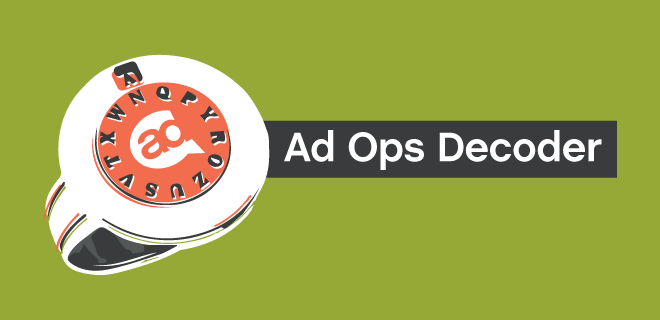
AdMonsters is proud to introduce the Decoder series, which aims to get past the ad tech jargon and opacity to explain how the industry works in terms the masses can understand. Look for new entries every week on a variety of topics. First up: VAST, the standard that continues to confuse to this day.
You’ve probably noticed that instream video advertising is quite different from display advertising—first and foremost, there’s another factor in involved in execution: the player. Instead of being sent from the page, the ad call goes through a video player.
There’s a wide variety of players out there, both third-party and home-built, so a standard needed to be developed to ensure that video ad servers could communicate with the majority of players. Before the introduction of the Video Ad Serving Template (VAST) by the IAB, advertisers had to code their creative to the specifications of each third-party and proprietary video player they wanted to work with.
Like the third-party display ad-serving template, VAST is an XML schema that serves as a communication layer between third-party ad servers and video players. As long as both the player and the ad server (as well as any third-party tech involved) understand VAST, a video ad can be served and will play alongside any video content.
VAST does not play the creative itself or determine how it fits into the user’s experience; those are still the player’s responsibilities. VAST does provide a tool to request a video, in which the player ultimately controls how the ad displays. It tells the video player the video exists and where it’s hosted, as well as relevant metadata like length, bitrate, file format and dimensions.
The standard can also communicate tracking information about click-throughs, the length the video is played, a tracking pixel, data about companion ads (meant to load in or near the player at the same time as the video ad itself), and more.
The majority of players and ad servers in the industry are compatible with at least VAST 2.0. VAST 3.0 was released in 2012 and is backwards compatible with parties using 2.0. The biggest development with VAST 3.0 is the player’s ability to communicate to the server which formats it will and won’t accept before a unit comes its way. These include linear ads, non-linear ads, skippable linear ads, linear ads with companions and ad pods (groups of video ads like TV commercial breaks).
“With VAST 3.0, the guesswork of which VAST ad format a player supports is eliminated,” the IAB commented on release.
However, many industry players did not find VAST 3.0 worthwhile to go through the hassle of upgrading, so they stuck with VAST 2.0. The latest update is a true game-changer that recognizes the increasingly diverse stable of video platforms.
Officially released in January 2016, VAST 4.0 offers support for
• Ad stitching or server-side insertion. Most desktop digital ads are served from the client side to enable advertiser tracking and measurement capabilities. But video content providers worry about low-resolution creative and latency in delivery, especially when it comes to displaying on large screens and live streaming. Server-side insertion or stitching ads to content reduces latency, ensures proper creative are always loaded, and (currently) gets around ad blockers.
• Separating video files from interactive APIs to ensure ads can be played on systems and platforms that may not be able to read the interactive components (e.g., Connected TV and OTT).
• Three simultaneous streams: low-quality, medium-quality, and high quality. These are selected by the ad server based on screen resolution, connection strength, and other factors. In addition, VAST 4.0 supports extreme high-quality “mezzanine” files that can be transcoded or used for stitching.
• Verification and viewability measurement, which previously required the Video Player Ad-Serving Interface Definition (VPAID).
• A standardized timestamp macro.
Companies can upgrade directly from VAST 2.0 to 4.0, and the latest version is still backwards compatible with 2.0 and 3.0. Adoption has been slow, but is expected to take off in 2017 and be installed on a wide set of systems by the end of the year.
AdMonsters Resources:
AdMonsters Playbook: The Ultimate Digital Video Guide (2015)
AdMonsters Playbook: Cross-Platform Video (2016)
Introduction to VAST Tag (2010)
Getting Up to Date on VAST (2015
VPAID vs. VAST (2011)